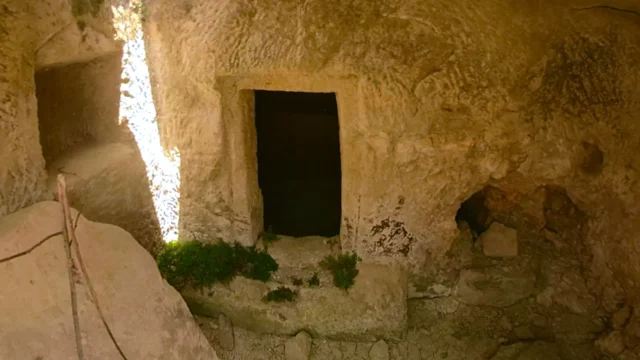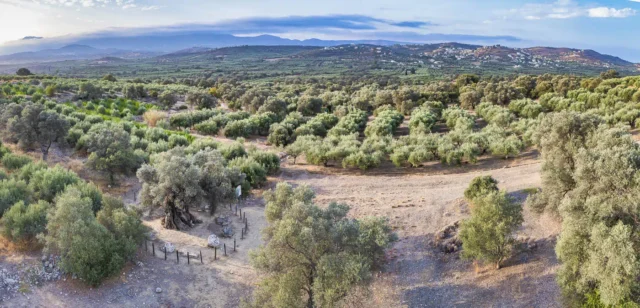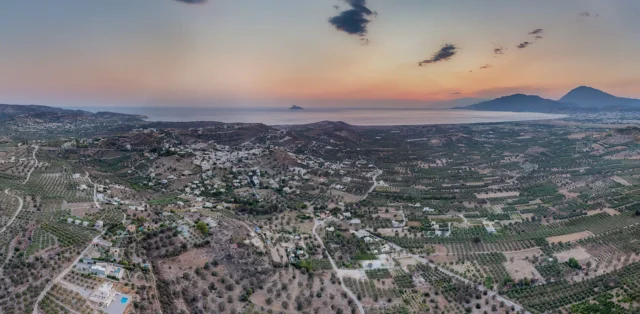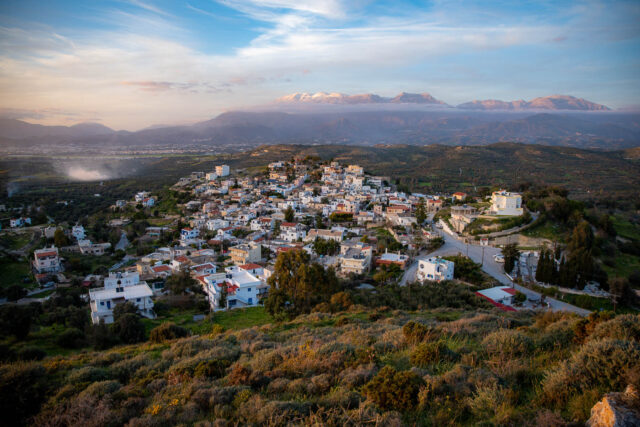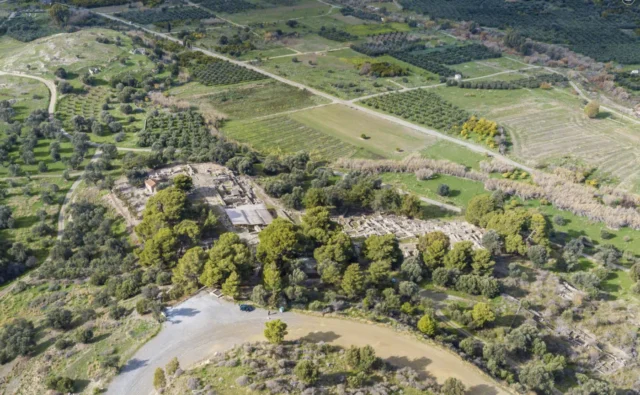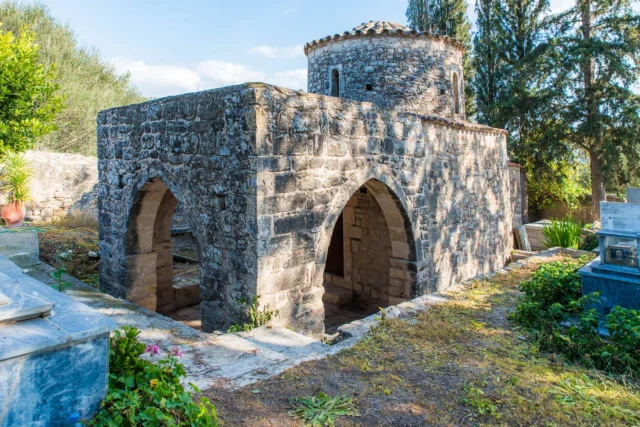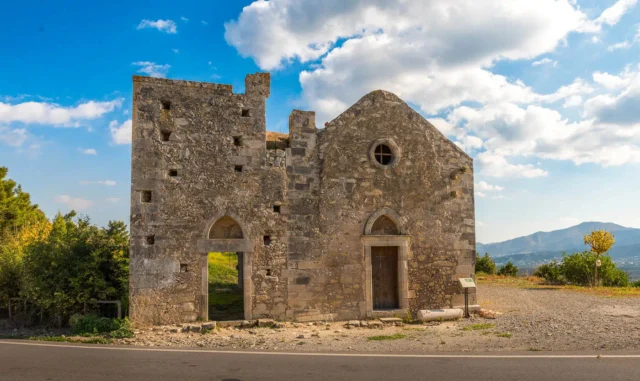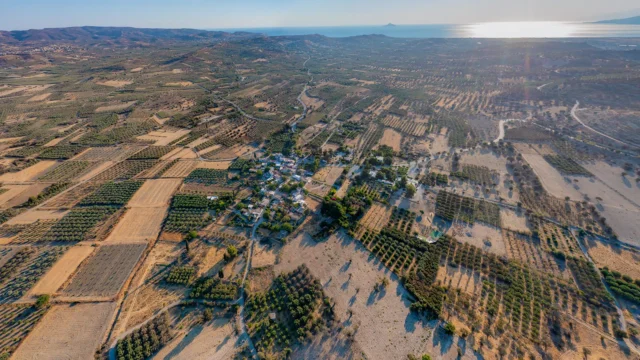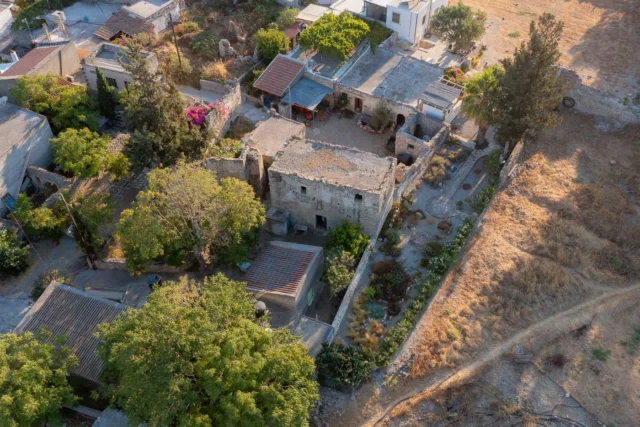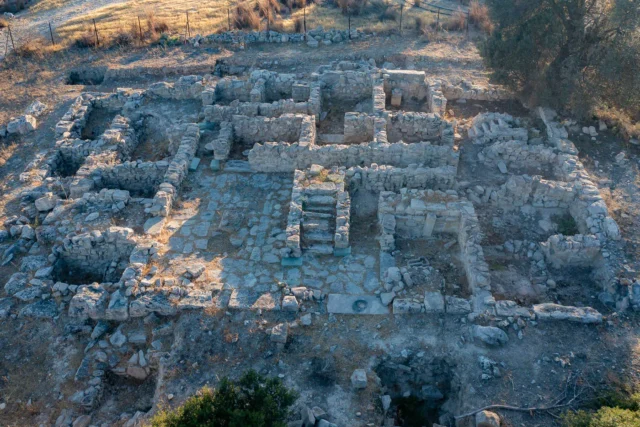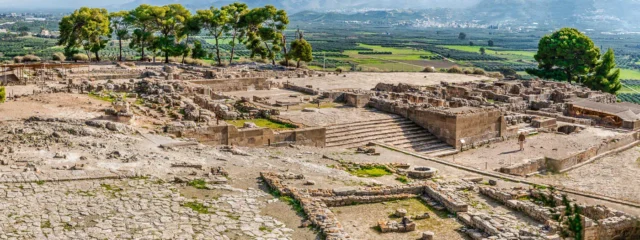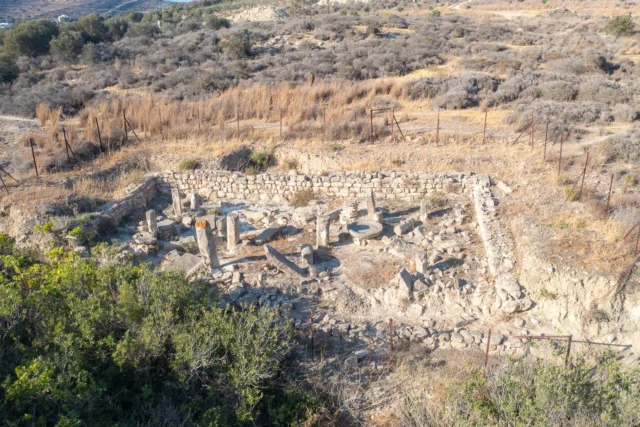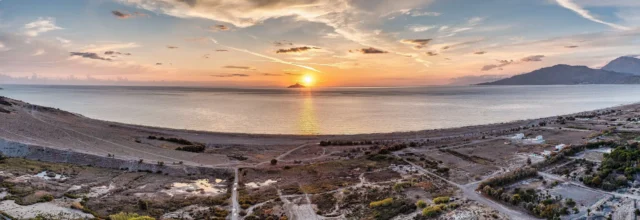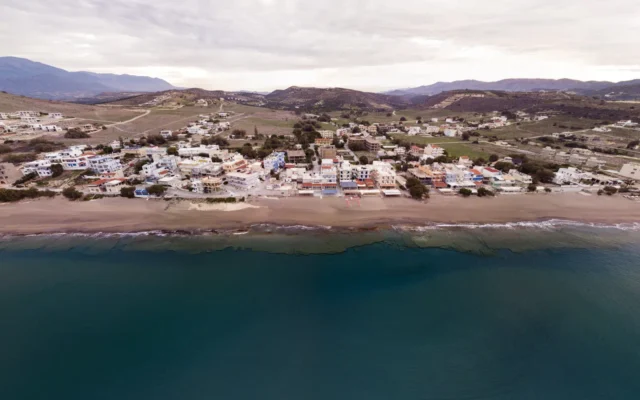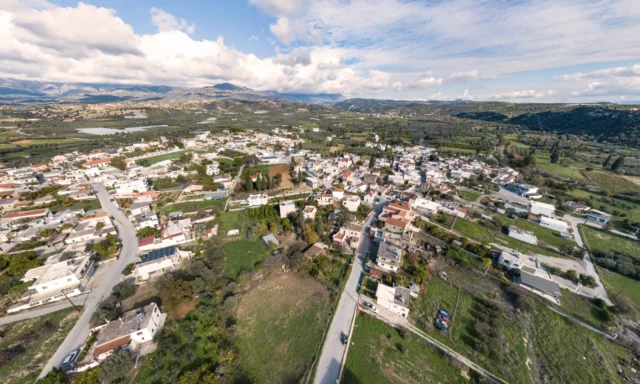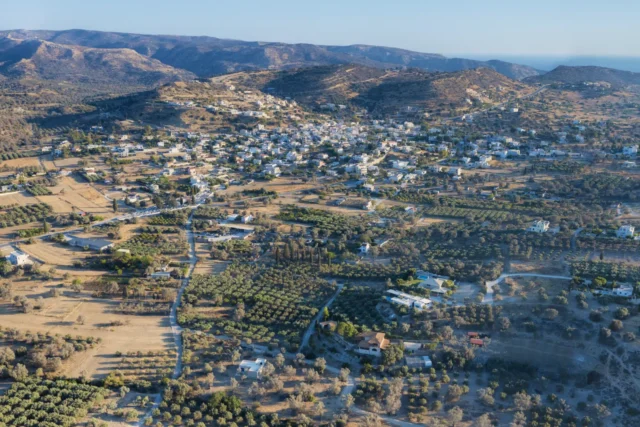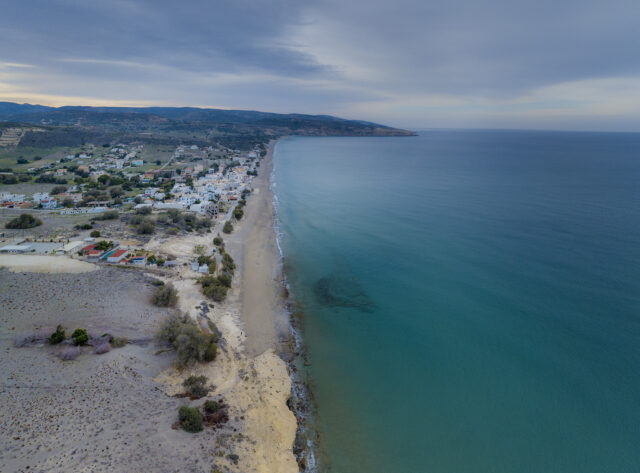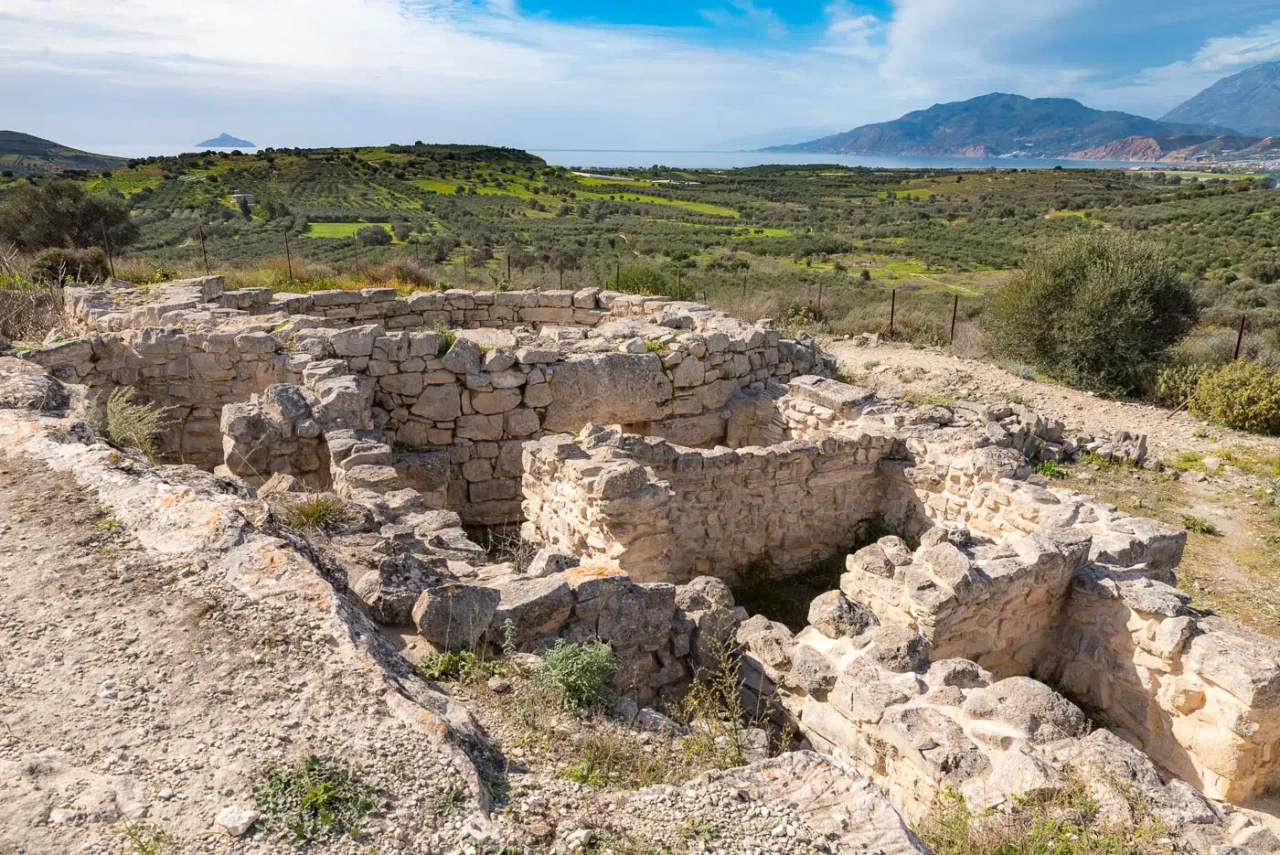
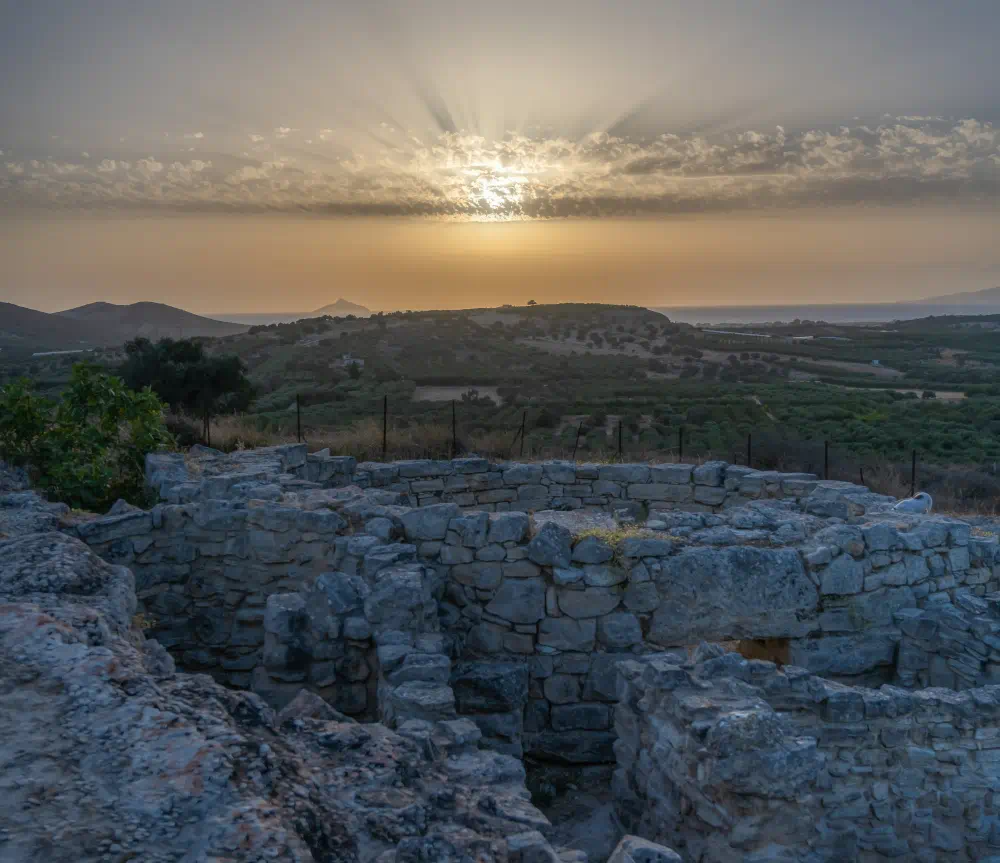
The Tholos Tomb of Kamilari, situated on a coastal hill southwest of Agia Triada and near Phaistos, is a significant archaeological site offering insights into the funerary practices of the Minoan civilization. Constructed around 1900 BC (Middle Minoan IB), it stands as the largest and most well-preserved among three tholos (beehive) tombs in the area. While the exact relationship between the tomb and nearby settlements remains unclear, its proximity suggests a connection to the elites of Agia Triada or Phaistos. This connection is supported by the tomb’s geographic proximity to these centers, the alignment of its construction and usage with the flourishing of Agia Triada and Phaistos during the Minoan Middle Minoan and Neopalatial periods, and the tomb’s impressive size and continuous use over several centuries, suggesting it served a high-ranking community.
The Cemetery
The Kamilari cemetery is organized around three tholos tombs located at different points. Tholos A, the most preserved tomb, features a large circular chamber, five external rooms east of the main chamber, and an open-air courtyard to the north. Tholos B, located northeast of Tholos A, is only partially preserved. Tholos C, situated to the east-southeast, is smaller and was repurposed as a sacellum (a small shrine) where numerous votive offerings were found, indicating a cult dedicated to Demeter and Kore, deities associated with agrarian fertility.
The Project
A comprehensive research project has been undertaken to study and publish the findings from the Kamilari cemetery. The project involves various components, including the study of stratigraphy, ceramic and non-ceramic materials, human bones, other faunal and charcoal samples, and the vaulting roof. Investigations at the Stratigraphical Museum of Phaistos have revealed unpublished vessels and artifacts, contributing to a deeper understanding of the tomb’s history and usage.
Later Periods of Occupation
The occupation of Tholos A continued into the post-palatial period (LM II-III) without interruption, with the circular chamber remaining the primary area for depositing offerings. The presence of kylikes, bowls, and stirrup jars in the external area suggests special rituals like toasting and libation were performed outside the tomb. The deposition of a possible LM IIIA Mitannian faience or glass cylinder seal hints at the continuation of old customs.
Tholos B: Mylona Lakkos
Tholos B, located northeast of Tholos A, was constructed similarly to Tholos A. In 2009, pottery material and human bones were discovered along the slope of the southern cliff, likely revealed after rain. Looting activity was also observed on the north side of the tomb. The recovered materials, including bronze artifacts, date the tomb’s usage between MM II and LM I, with the MM III period being the major period of occupation.
Conclusions
The Kamilari cemetery’s long occupation and the abundance of material, particularly from Tholos A, necessitate a closer examination of the relationship between the cemetery and its landscape. The continuous use of Tholos A and the various additions to the landscape suggest changing perceptions of the past, the role of the dead and ancestors, and the evolving mortuary behavior over time. The final goal of the publication project is to understand these changes by studying the materials used and offered, the architectural modifications, and human bone manipulations. This comprehensive study aims to shed light on the social choices of the living communities who used the cemetery across centuries and to investigate the interconnections with political and socio-economic aspects.
Key Points
- Construction Period: Middle Minoan IB (around 1900 BC)
- Location: Coastal hill southwest of Agia Triada, near Phaistos, Crete
- Dimensions: Tholos A has an internal diameter of 7.65 meters.
- Historical Significance: Provides insights into Minoan funerary practices and potential connections to the elites of Agia Triada or Phaistos.
- Current Status: The tomb is fenced, but the gate is unlocked, allowing visitors to enter and explore the site.
References
The path that leads there winds among the olive trees but does not necessarily provide protection from the sun.
The site is well maintained
The explanatory panel (in French) is an approximate Google translation
In short if you are in the area go there but don't make it a destination
Access
A short and easy hike is required.













